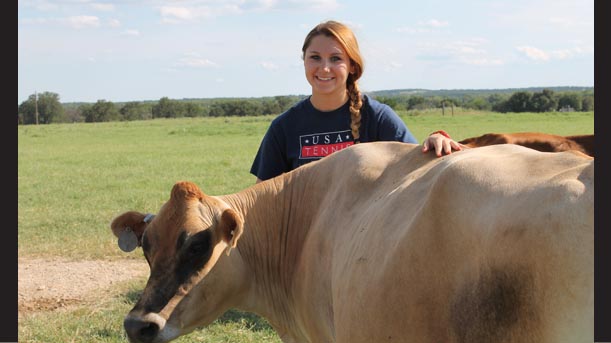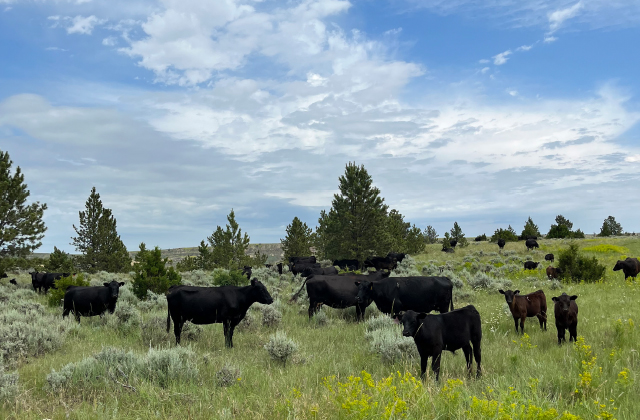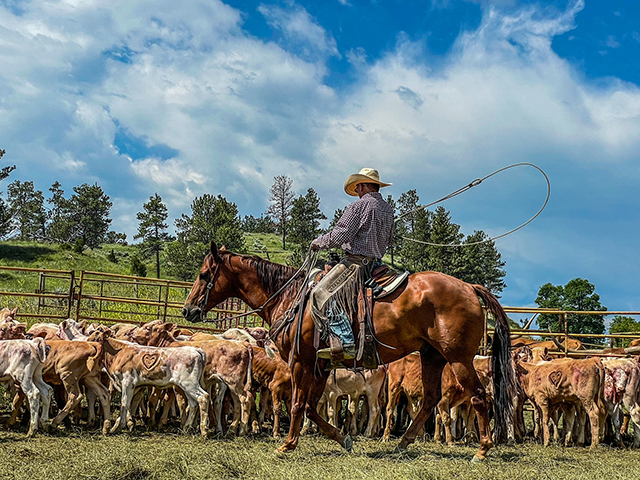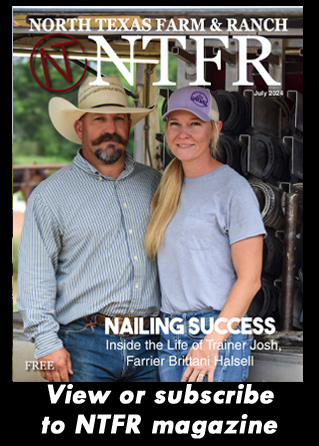Farm & Ranch
Dry Valley Dairy

By Jessica Bartel, editor
In today’s society it has become more important for the agriculture industry to educate its consumers. The head of the household, mother, makes the decisions on what her family eats and drinks. It’s become more apparent that these super-moms are making more healthy-conscious decisions for their family. At Dry Valley Dairy, Charles Steadham and his family make the effort to cater to those looking for un-pasteurized milk and grass fed beef.
In March of 2011 the Steadhams started milking Jersey cows and in June of that same year they started selling their milk. Prior to that, the Steadhams milked Holsteins and sold their milk commercially for 20 years. Selling 80-100 gallons per day, the Steadhams sell fresh raw milk from pastured Jersey cows. Raw milk, as Charles put it is, “Just the way it came from the cow! Jesus made milk!”Raw milk is not pasteurized with cream and butterfat still intact. Butterfat contains vitamins A and D needed for absorption of calcium and protein found in the water fraction of milk. Without them, protein and calcium are more difficult to utilize.
Butterfat is rich in short and medium chain fatty acids, which protect against disease and stimulate the immune system. To read more pick up the September 2014 issue of North Texas Farm & Ranch.
Farm & Ranch
Ag Elsewhere: Wyoming

By Tressa Lawrence
Ranchers across northeast Wyoming and the surrounding areas saw record moisture levels in 2023. The year 2024 has seen significantly less moisture to date.
Farm & Ranch
Ag Elsewhere: Montana

By Lindsey Monk
People are finishing up brandings. Here, Danny Walter is shown getting it done.
Farm & Ranch
Animal Disease Traceability

By Barry Whitworth, DVM
On July 6, 2020, the United States Department of Agriculture Animal and Plant Health Inspection Service (APHIS) posted in the Federal Register a proposal that radio frequency identification tags be used as official identification for cattle and bison. Following a period for public comment, the USDA APHIS released a statement on April 24, 2024, with the amended animal disease traceability (ADT) regulation for cattle and bison. The full press release may be found at https://www.aphis.usda.gov/news/agency-announcements/aphis-bolsters-animal-disease-traceability-united-states. Under the new rule, cattle and bison will need to be identified with tags that are both visual and electronic.
The USDA defines ADT as knowing where diseased and at-risk animals are, where they have been, and when the animal disease event took place. A system that allows for efficient traceability of livestock in the United States is essential for animal health and reducing the economic effect of a foreign animal disease outbreak and other diseases on livestock producers as well as others whose well-being depends on livestock production.
To read more, pick up a copy of the July issue of NTFR magazine. To subscribe by mail, call 940-872-5922.
-

 Country Lifestyles1 year ago
Country Lifestyles1 year agoScott & Stacey Schumacher: A Growth Mindset
-

 Country Lifestyles7 years ago
Country Lifestyles7 years agoStyle Your Profile – What your style cowboy hat says about you and new trends in 2017
-

 Equine10 months ago
Equine10 months agoThe Will to Win
-

 HOME7 years ago
HOME7 years agoGrazing North Texas – Wilman Lovegrass
-

 Country Lifestyles4 years ago
Country Lifestyles4 years agoAmber Crawford, Breakaway Roper
-

 Outdoor9 years ago
Outdoor9 years agoButtercup or Primrose?
-

 Country Lifestyles8 years ago
Country Lifestyles8 years agoDecember 2016 Profile, Rusty Riddle – The Riddle Way
-

 Country Lifestyles8 years ago
Country Lifestyles8 years agoJune 2016 Profile – The man behind the mic: Bob Tallman






